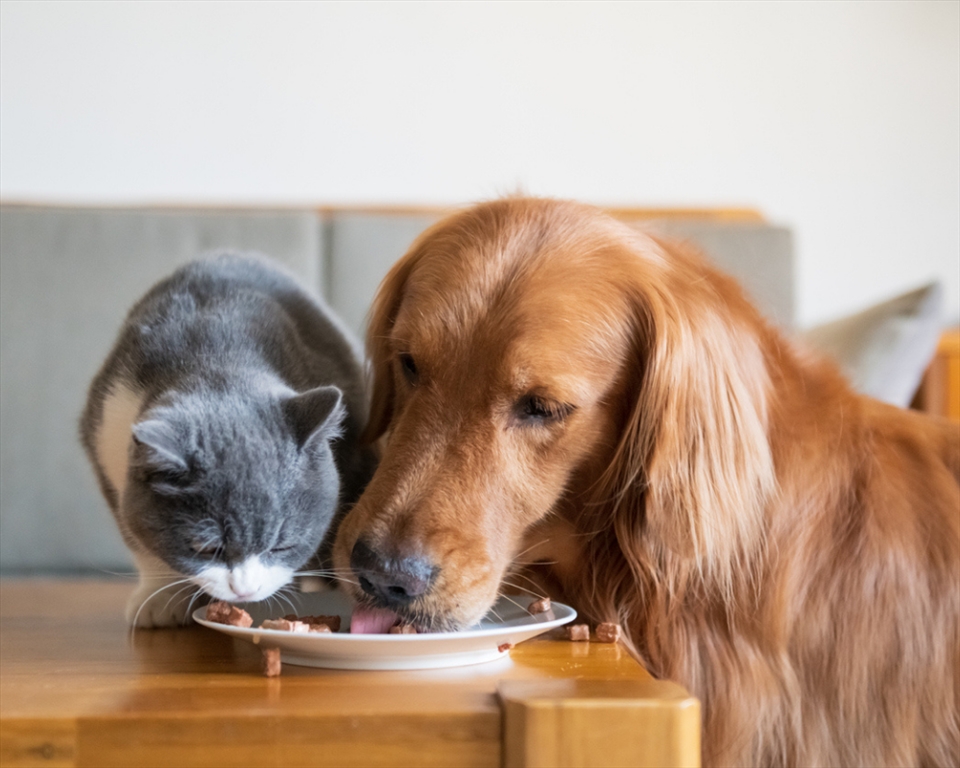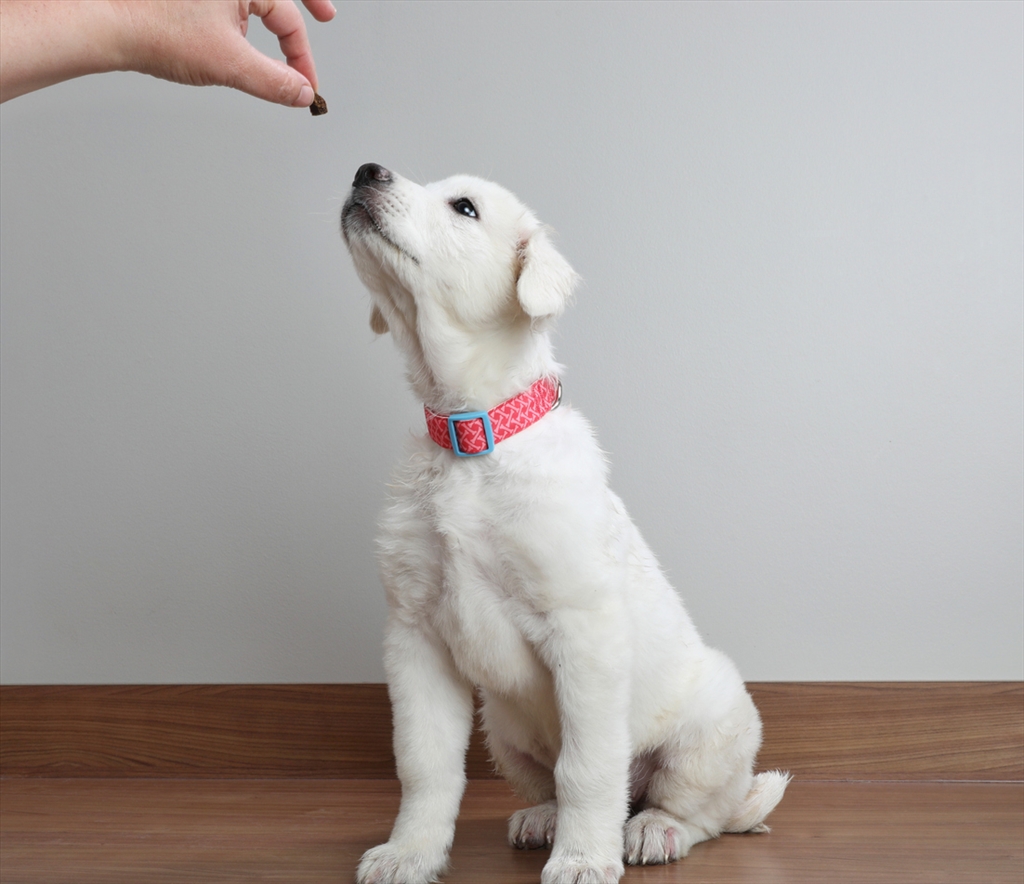The Burns Ultimate Guide to Nutrition in Pet Food
 Our pets, just like ourselves, need good nutrition in order to live long and happy lives. Without adequate nutrition, our pets could begin to suffer. Diet is the fuel for the body and foundation for good health. A good quality diet will help our pets achieve and maintain a state of optimal health while creating a strong digestive and immune system.
Our pets, just like ourselves, need good nutrition in order to live long and happy lives. Without adequate nutrition, our pets could begin to suffer. Diet is the fuel for the body and foundation for good health. A good quality diet will help our pets achieve and maintain a state of optimal health while creating a strong digestive and immune system.
Macronutrients in Pet Food
Macronutrients, such as carbohydrates, protein and fat, are needed for growth, energy and basic bodily functions. They should be a big part of what makes up pet food, but they need to feature in the correct proportions to ensure optimum health. In order to gain a better understanding of pet food, let’s look at each macronutrient in more detail.
Protein
Protein is an essential nutrient and has many functions in the body. It is a building block of tissue and essential for growth and repair. Protein is also a major structural component of hair, nails, ligaments, tendons and cartilage, and it’s also involved with the immune system.
Protein in Pet Food
There’s currently a lot of emphasis on protein in pet food, but it’s important that the protein content isn’t too high. The protein level for adult and senior foods should be a minimum of 18%. Some pet foods tend to have a higher protein amount, but overloading the body with excess protein has been linked to a number of negative effects in our pets.
Fat
Fat is the most energy-dense nutrient. It makes food more appealing to our pets because it results in a tastier food with a better aroma and texture. It’s also a source of essential fatty acids (EFAs) such as Omega 3 and Omega 6 and helps with the absorption of fat soluble vitamins.
Fat in Pet Food
It’s a good idea to look for a food that has around 7 - 8% fat. In a dry food, under 10% fat is considered low and the minimum recommended level for a dog is 5.5%. For puppies, the minimum recommended level of fat in a complete diet is 8.5% as a puppy needs a higher level of calories to support their growth, our Burns puppy diets have been created with a fat level of 11-15% fat to support slow and steady growth.
Carbohydrates
Dogs don’t have a minimum requirement for carbohydrates but if they aren’t getting enough their body will use protein and fat as their energy source. Diets that are low in carbohydrates have been shown to be a particular problem for pregnant dogs.
Carbohydrates in Pet Food
You won’t see carbohydrate labelled in the analytical constituents of a pet food, but it is an excellent energy source for the body. Always look for food that uses highly digestible, complex carbohydrates to provide a steady release of energy. Ingredients such as wholegrains also supply other nutrients such as vitamins and minerals.
Fibre
Fibre is a complex carbohydrate that can be soluble or insoluble. It isn’t broken down by the enzymes in the stomach of dogs and cats but instead is subject to bacterial fermentation in the colon. Fibre helps to promote and regulate normal bowel function and has a role in numerous health conditions such as diabetes, obesity, IBS and constipation.
Fibre in Pet Food
Most pet foods contain about 1-3.5% fibre. A pet food containing wholegrains such as brown rice or oats would be high in fibre and very beneficial. The Burns Weight Control Chicken & Oats, for example, is a high fibre diet with 7.5% fibre, which can help to satiate greedy dogs as well as being beneficial for certain health conditions.
Common Misconceptions in Pet Food
With so much information and a huge amount of opinion out there, navigating the right pet food for our furry family members can seem like a real minefield. At Burns, we spend a lot of time supporting owners with our free nutritional helpline, and unfortunately, we know that a lot of people still have misconceptions about pet food. Here are just a few of the common myths we’ve helped dismantle:
Myth 1: Meat should be the primary ingredient in pet food
Myth 2: A high-protein diet is the best thing for your pet
Myth 3: Carbohydrates and grains are bad for pets
Myth 4: Corn is a filler ingredient and bad for pets
Myth 5: Human leftovers are always good for pets
Myth 6: You shouldn’t feed your pet vegetables
 What to Look for in a Pet Food
What to Look for in a Pet Food
When looking for a pet food, you should always make sure the ingredient list is simple and easy to understand with identifiable protein and carbohydrate sources. Be careful with food that say something like ‘cereals’, or ‘meat and animal derivates,’ it means that you can’t actually be sure which cereal or meat is in the food. It also means the pet food producers can actually change the derivative between batches, usually depending on what’s cheapest at the time.
What’s Really in Pet Food?
The ingredients in pet food are usually listed in order of the quantity that’s in the food. So, if a pet food is 90% cereal, this is what’s going to be listed first. When choosing a wet food as with a dry diet look for identifiable high quality ingredients, but remember that wet foods contain a high percentage of moisture (around 75%) and therefore the feeding amounts will also be higher than that of a dry diet. It is important that when considering feeding a wet food, if you are looking for specific dietary requirements such as low fat then what may initially appear low fat on the packaging is in fact not comparable to a dry diet as it does not take into consideration the dry matter/moisture content of the food.
What’s Really in Wet Pet Food?
When choosing a wet food, you need to take into consideration the amount of moisture in the food. A lot of people say there is more nutrients in dry food than in wet food, which is probably because wet food contains around 75% moisture. As the feeding amounts for wet food are higher, the dog won’t be getting more nutrients on a dry food.
What Does Hypoallergenic Mean When it Comes to Pet Food?
Many people believe that if a food is ‘hypoallergenic,’ the dog won’t react to it, but all it means is that it is ‘relatively unlikely’ to cause a reaction. For example, if a dog is fed on a hypoallergenic food that contains chicken, they can still have a reaction if they have an intolerance to chicken. Some people believe that there is a special ingredient added to hypoallergenic or sensitive foods to stop a dog reacting to them, which isn’t the case. Instead, these diets just avoid common ingredients that are linked to causing intolerances in pets, such as dairy, wheat, wheat gluten, soya and beef.
The Benefits of a Grain Free Diet in Pet Food
Despite popular belief, there has been no scientific evidence to back up grain free diets and yet they have become a popular trend within pet food. Grain is just another name for a cereal and there are several types of grains, all which are highly nutritious and have many health benefits. Grains contain vitamins, mineral, EFA’s and Amino acids. Wholegrains are complex carbohydrates and provide a good source of energy and fibre.
Aren’t Grains Just Fillers in Pet Food?
Grains are not fillers in dog food. Rather, they’re packed full of nutrients providing the diet contains high quality wholegrains which are highly digestible. There’s no evidence to suggest an ingredient such as potato or sweet potato is any better than an ingredient such as brown rice. Although, with any ingredient, it is important to make sure they are high quality.
How Important is Meat in Pet Food?
Healthy pets need the nutrients and balance of amino acids which come from protein, but despite popular belief, these can be found in meat and non-meat sources. Corn, for example, can provide protein just as well as chicken. There are guidelines set out for the pet food industry, which means there are minimum protein levels recommended for dogs throughout their growth and into adulthood to make sure they are getting the protein they need.
How Important is High Protein in Pet Food?
Protein is an important nutrient for pets, but this doesn’t mean the more protein the better. Many of our pets enjoy a leisurely life of sleeping on the sofa with regular walks and do not have the ability to store excess protein. When protein intake exceeds requirements, it just means the liver and kidneys must work harder to process the extra protein. Once they have all the protein they need, the rest is wasted in urine, which is why it’s important to feed a high-quality protein, without going overboard.
Common Issues in Dogs
Having a smelly dog and needing to empty anal glands is not a routine part of everyday life. Instead, common issues like these could be a sign that there is a build-up of waste in the system that the body is trying to expel. These common problems can be related to a poor quality diet, overfeeding, or a diet that just doesn’t suit your pet.
Breed Specific Pet Food
Today’s pet food industry is a minefield of diets that make a vast array of claims, and breed specific diets are no different. It’s natural that a pet owner would be drawn to this form of diet, with many pet food manufacturers claiming that their food has been specifically created with their pet’s genetic makeup in mind. Unfortunately, like other areas within pet nutrition, this is a food trend that does not have the nutritional scientific evidence to back it up. Any high quality balanced complete diet would consider the nutritional needs of any animal based on their life stage, size and lifestyle requirements.
Variety is the spice of life
Many pet owners don’t feel it’s right to give their animals the same diet day in and day out, but food variety is more of a human concept. If you are feeding a high quality, balanced and complete diet, your pet will be getting all their nutritional needs met. In fact, chopping and changing between diets could cause digestive issues for your pet. Some dogs will present as fussy eaters, but even in these cases, a diet change is not needed. More likely, a simple solution, such as a fine tuning of their current diet and an assessment of their overall consumption during the day, usually highlights a possible cause.
For more information about diet and nutrition, contact the nutritional advisors for free at burnspet.co.uk or on 0800 083 6696.
Back









